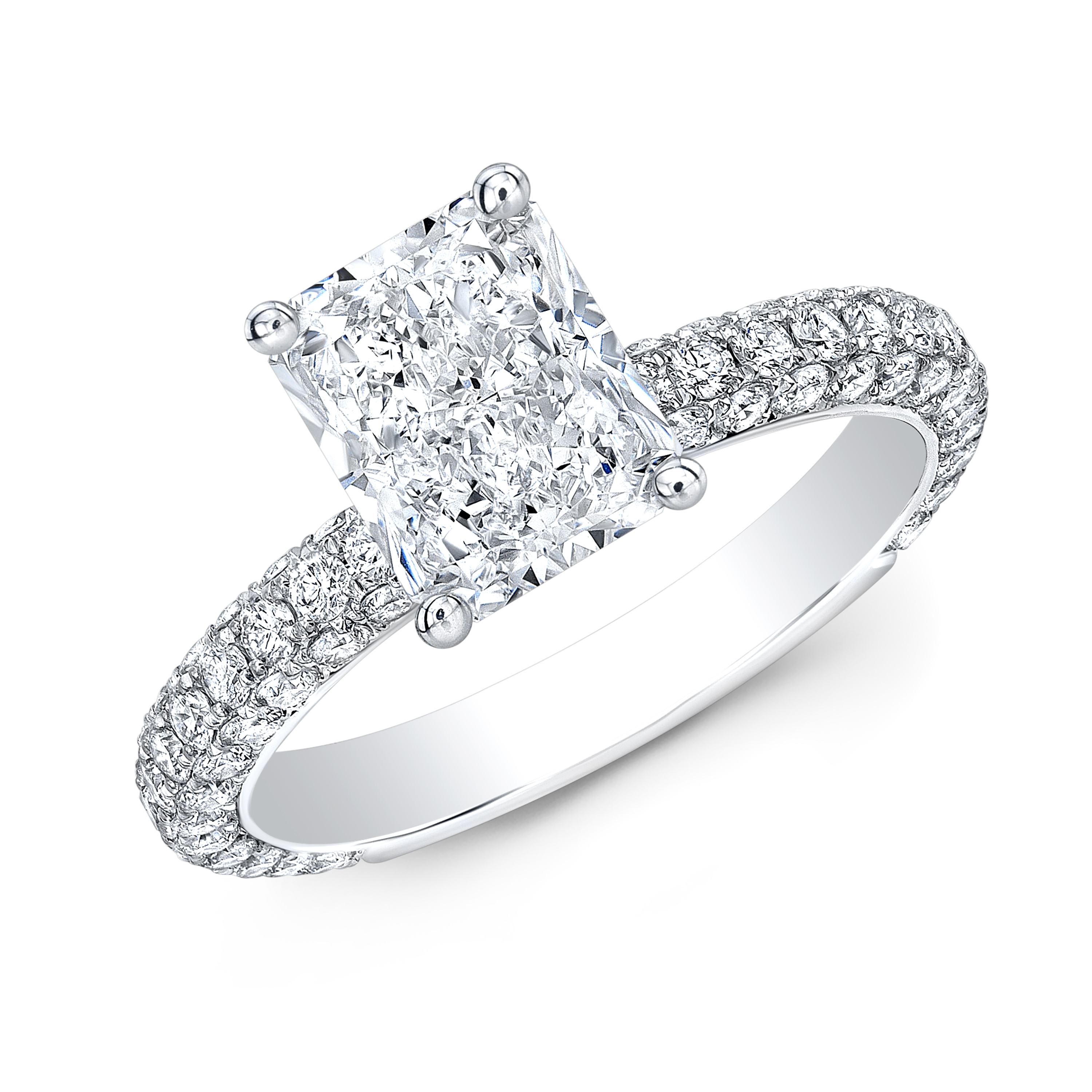

On the pavilion, there’s often eight main pavilion facets with 16 on the lower girdle. The largest one is the table on its crown, which is surrounded by star, bezel, and upper girdle facets. If you look closely, the individual facets will vary in shape and size. One difference is the facets in a given section on an oval cut are not always symmetrical. It’s designed to capture and reflect the most light possible, so you can expect strong brilliance from oval cuts.

The facets and proportions on an oval cut diamond are most comparable to round cuts. The term is often referring to cushion cuts, but the small facets in the center of radiant cuts have a similar appearance. The high number of facets sometimes creates a “crushed ice” look. This feature led to the first of its kind to be cut in a way that maximized its brilliance, a trait previously reserved for round cuts. Radiant cuts were the first square cut diamond to have the brilliant facet pattern on both its crown and pavilion. Oval and radiant cuts have pros and cons, so you should know what to expect to find the perfect diamond for you. If you’re deciding between these cuts, it’s important to know how they’re different in both appearance and performance. This inspired the creation of the oval cut. He was an expert at taking damaged pieces of gemstones and cutting away the flawed areas.įrom there, he’d create new, smaller diamonds. Modern oval cuts were invented in the mid-1900s by Lazare Kaplan, a Russian diamond cutter. This is caused by its wide surface area, which can also make your fingers appear longer and thinner. It strikes the balance of highlighting its unique shape while also not resulting in a shallow diamond.Īn advantage of an oval cut is it often looks larger compared to other cuts of a similar carat. They come in a range of length-to-width ratios, but 1.30-1.45 is considered optimal.

It’s a modern, sleek cut that combines pear and round shape cutting styles. Oval cut diamonds are known for their elongated shape. The result was the radiant cut, which has a brilliant cut pattern on both the pavilion and crown but the outline of an emerald cut. He molded the techniques used to create emerald and brilliant cuts. Radiant cuts were invented by Henry Grossbard in the late 1970s. When placed in a setting where the corners are covered, they may look identical. Princess cuts have sharp corners, while the corners on a radiant cut are cropped to remove those points.

The shape mimics a princess cut, but its corners are different. The difference is a cushion cut’s edges are slightly curved, while radiant cuts have straight edges. It’s similar to a cushion cut because they both have squarish shapes. Its shape is comparable to a princess or cushion cut. For square-shaped radiant cuts, the ideal ratio is 1.00-1.03. These brilliant cuts can have a length-to-width ratio of 1.00-1.50. Radiant cut diamonds are distinguished by their square or rectangular shape with cropped corners. Let’s compare radiant versus oval diamonds across each of the traits most important in determining a diamond’s quality, including brilliance, clarity, price, and more. These fancy shapes offer a unique style not found with traditional round cuts. Radiant and oval cut diamonds are often used as the center stone in an engagement ring. There are a range of options available, and each diamond cut differs in its appearance and how it captures and reflects lights. Cut is one of the first considerations for many buyers when they’re searching for the right diamond.


 0 kommentar(er)
0 kommentar(er)
